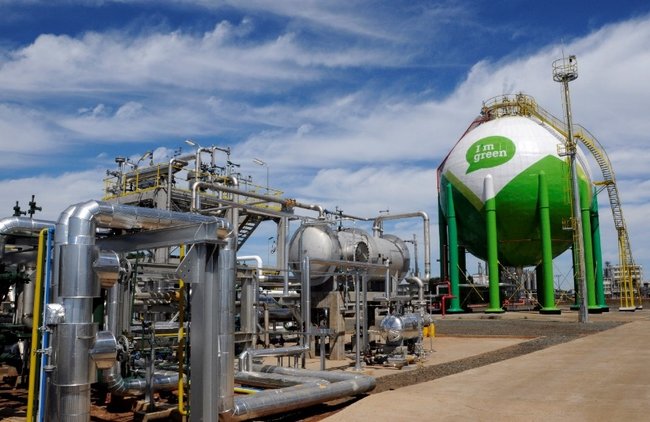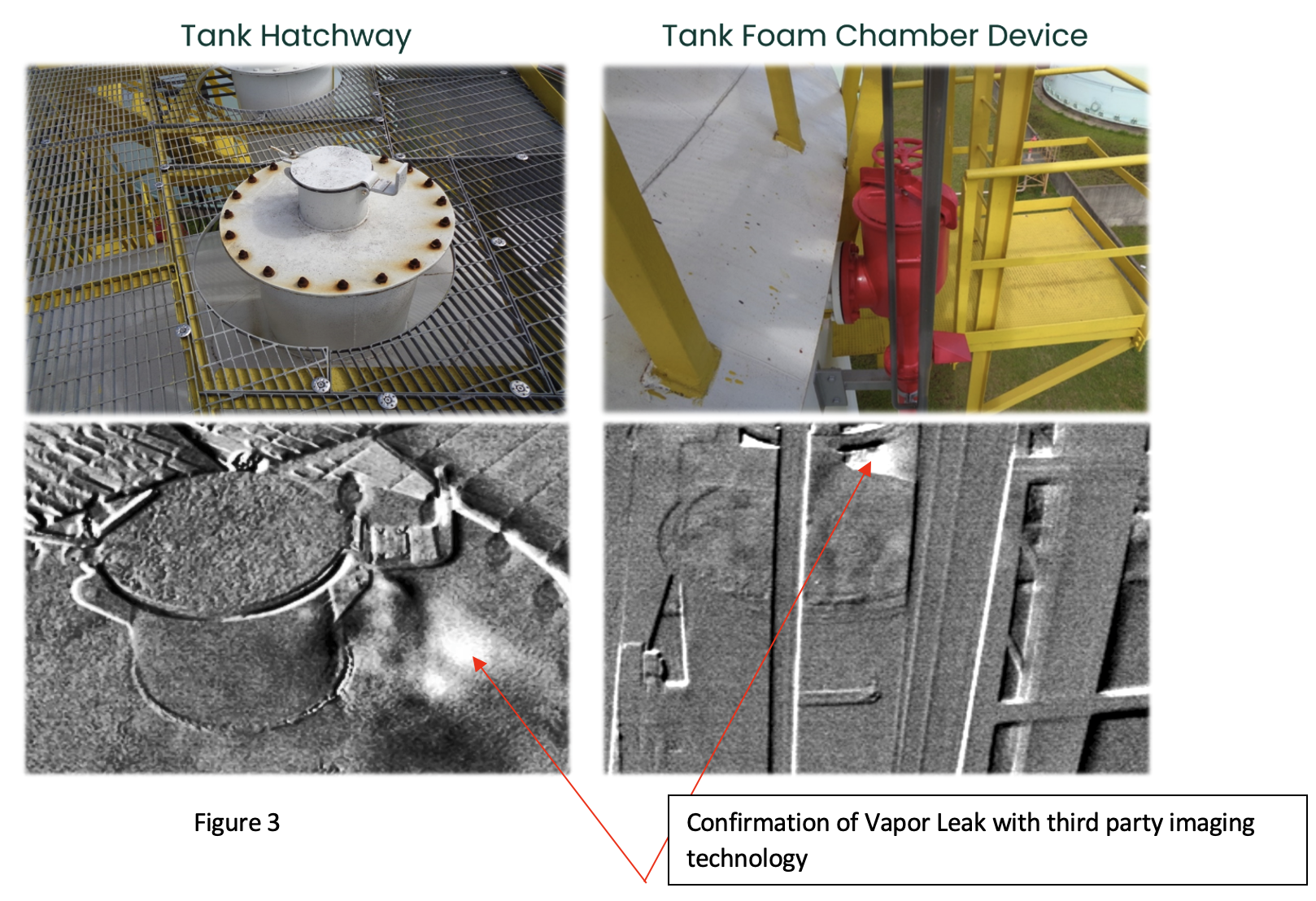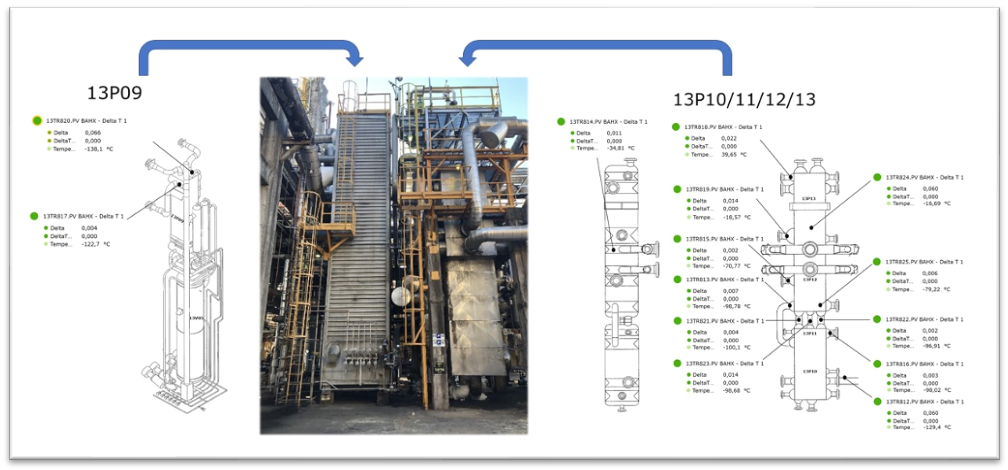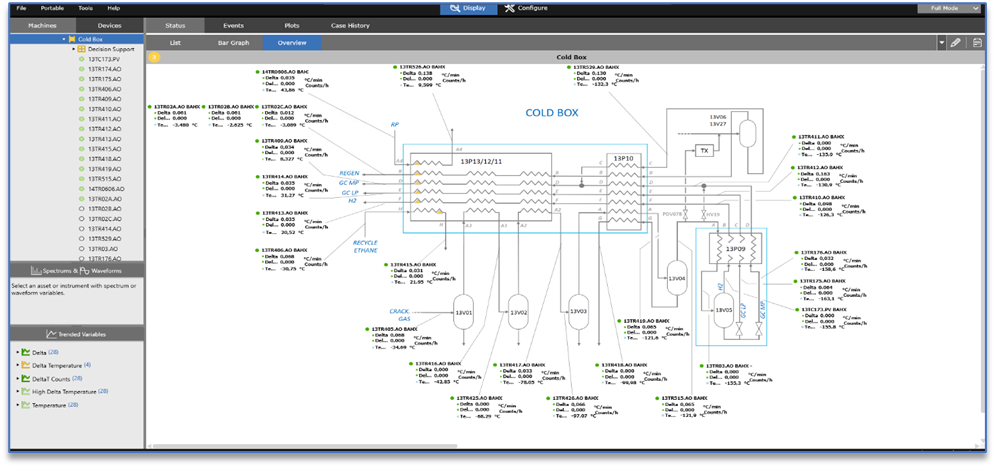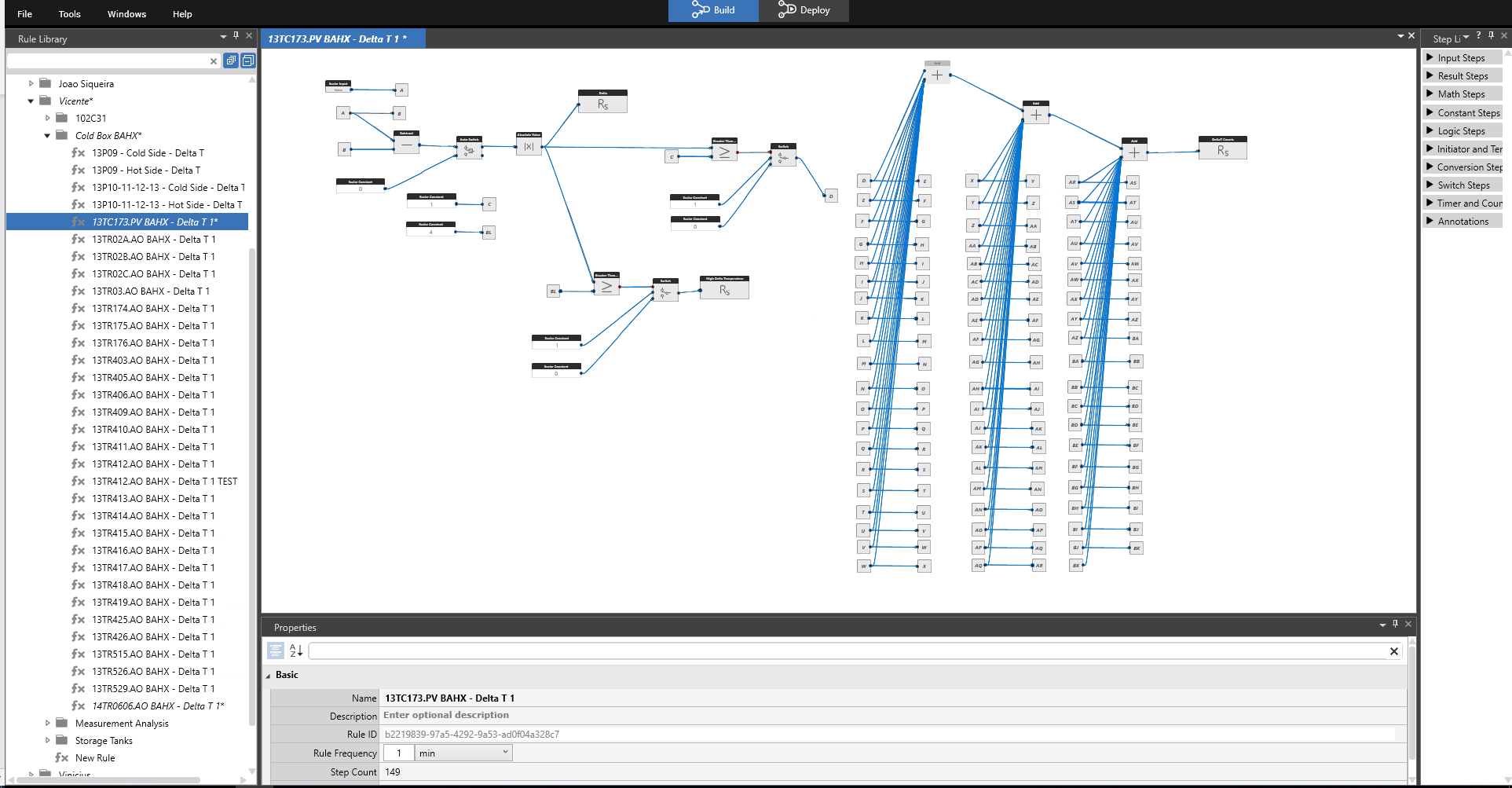
Braskem: Combining staff knowledge with System 1 Decision Support to increase plant safety & operational excellence.
Created in August 2002 by the integration of six companies from Odebrecht Group and the Mariani Group, Braskem is currently the largest producer of thermoplastic resins in the Americas and the largest producer of polypropylene in the United States. Its production focuses on polyethylene (PE), polypropylene (PP) and polyvinylchloride (PVC) resins, in addition to basic chemical inputs such as ethylene, propylene, butadiene, benzene, toluene, chlorine, soda, and solvents, among others. Together, they make up one of the most comprehensive portfolios in the industry by including the green polyethylene produced from sugarcane, a 100% renewable resource.
Braskem Subject Matter Expert: Vicente Frantz Ferreira holds the title of Instrumentation and Reliability Engineer at the Braskem-Q2 site. Vicente has 16 years of experience and supports Braskem goals to use technology and innovation to achieve sustainable development. Vicente uses Bently Nevada's System 1 for condition monitoring and has installed Bently Nevada's Decision Support on the System 1 server to generate new insights into changing conditions and detect failure modes via analytics. This article highlights how Braskem has utilized Decision Support to reduce risk and improve safety. For a review on Decision Support Developer, please review the Decision Support Orbit article released during Q3 of 2020.
Storage tanks are commonly found in many industrial facilities. Depending on the content of the storage tank, regulations may be in place for health, safety, and compliance benefits. For those reasons, condition monitoring of storage tanks is important. As an example, Braskem is interested in condition monitoring of various tanks to detect vapor leaks. Many of Braskem's tanks have sensors which detect tank level, tank pressure, and environment temperature. By integrating these values into System 1, Braskem staff were able to use their knowledge to create custom analytics with Decision Support Developer to identify tank leakage.
As shown in figure 1, a Decision Support rule was created by Braskem staff using the mentioned sensors to monitor the behavior of internal tank pressure. The analytic is designed to alarm when a vapor leak is present. Soon after the analytic was deployed, System 1 indicated an alarm associated to a vapor leak (see figure 2). Once detected, Braskem staff verified the leak with third party imagery technology (see figure 3). The finding provided Braskem with early insight to the vapor leak. Braskem staff then corrected the leak by changing the tank hatchway and foam chamber seals. The same rule was then deployed on other tanks for improved condition monitoring and corporate learning.
Result & benefit to Braskem: Improvement to Plant Safety by identifying vapor release and reduction of Nitrogen consuption associated to the blanketing system. Braskem was able to replicate the analytic and apply the solution to other equipment.
Background: Brazed Aluminum Heat Exchangers are widely used in the Aerospace, Chemical, and Oil & Gas industry. More than 500 gas processing facilities operate across USA, and cryogenic separation using BAHXs is common. For Braskem, the greatest concern for failure of a BAHX is related to thermal fatigue. As the exchanger is heated or cooled, BAHX parts expand or contract. If the parts change temperatures at sufficiently different rates, the expansion and contraction can be disproportionate. This increases stress on the connections within the BAHX as the aluminum parts push against and pull apart from each other. Over time, this process "fatigues" the metal, weakening it and ultimately causing cracks which may lead to major LOC (loss of containment).
Within Braskems' Olefins 1 area of the Q2 facility, Braskem staff targeted the BAHX for risk mitigation to improve plant safety.
By evaluating plant historical data, Braskem subject matter experts found opportunities to improve the startup process of the BAHX. Braskem staff were able to embed plant expertise in Decision Support Developer by creating and deploying custom rules allowing System 1 to notify Operations and Engineering which process stream to focus attention on to reduce the temperature fluctuations causing increased stress.
- Using System 1 Decision Support Developer, an analytic was developed to monitor the rate of change of temperature (deg C/min) during the startup and normal operation. This is important to monitor how fast temperatures are changing to avoid abnormal aluminum expansion or contraction between the BAHX layers. Over time, the expansion or contraction will fatigue the metal and creates thermal fatigue cracks that can allow process fluids to leak into the atmosphere or between adjacent layers inside the heat exchanger.
- Another analytic was developed to count how many times during the hour the rate of change of temperature was above a specified value. Small but persistent temperature changes could lead to cumulative thermal stress and fatigue.
The above plots show a comparison between 2014 unit planned shutdown without Decision Support monitoring/warnings (left images) and 2021 planned shutdown using System 1 and Decision Support (right images) to help Engineers and Operators reduce thermal stress on the BAHX.
By applying System 1 to the BAHX, Braskem has improved their condition monitoring for BAHX's leading to the following benefits:
- Braskem Operators and Engineers have gained new insights related to improved startup of the unit.
- Braskem eliminated significant spend related to the maintenance of the BAHX.
- Projected savings is $3.5 million dollars over the next 10 years on Olefins 1.
- Extended the life span of the BAHX (Cost of a new BAHX is $10M US)
- Improved asset strategy management: In 2022, additional skin point sensors were installed to improve the thermal stress monitoring (knowledge gained from the BAXH study).
In addition to the above, Braskem has used Decision Support to gain new insights related to: energy accounting for rotating equipment, failure mode detection for rotating equipment, Instrumentation Monitoring, and Anti Surge monitoring.
Our Experts

Vicente Frantz Ferreira
Instrumentation and Reliability Engineer at the Braskem-Q2 site
BIO
Vicente Frantz Ferreira holds the title of Instrumentation and Reliability Engineer at the Braskem-Q2 site. Vicente has 16 years of experience and supports Braskem goals to use technology and innovation to achieve sustainable development.
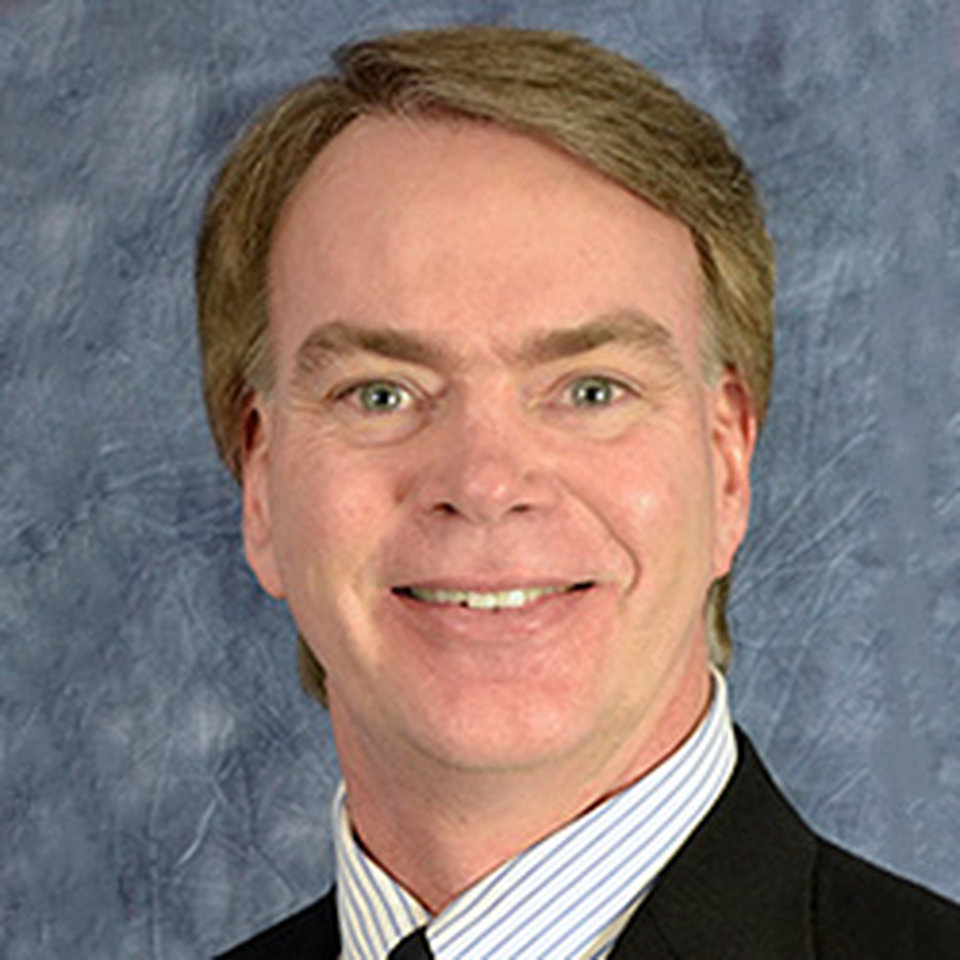
Jeffery Sipek
Software Product Manager
BIO
As a Software Product Manager, Jeff listens to customer needs and establishes the direction for System 1 Analytics. While working for Bently Nevada, Jeff has accumulated 30 years of experience in condition-based maintenance and asset management.


